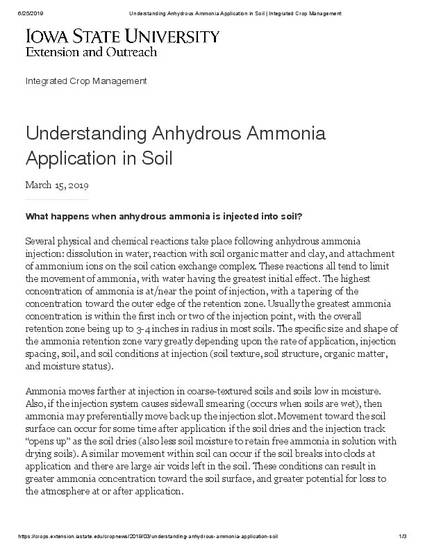
What happens when anhydrous ammonia is injected into soil?
Several physical and chemical reactions take place following anhydrous ammonia injection: dissolution in water, reaction with soil organic matter and clay, and attachment of ammonium ions on the soil cation exchange complex. These reactions all tend to limit the movement of ammonia, with water having the greatest initial effect. The highest concentration of ammonia is at/near the point of injection, with a tapering of the concentration toward the outer edge of the retention zone. Usually the greatest ammonia concentration is within the first inch or two of the injection point, with the overall retention zone being up to 3-4 inches in radius in most soils. The specific size and shape of the ammonia retention zone vary greatly depending upon the rate of application, injection spacing, soil, and soil conditions at injection (soil texture, soil structure, organic matter, and moisture status).
Available at: http://works.bepress.com/john-sawyer/421/
